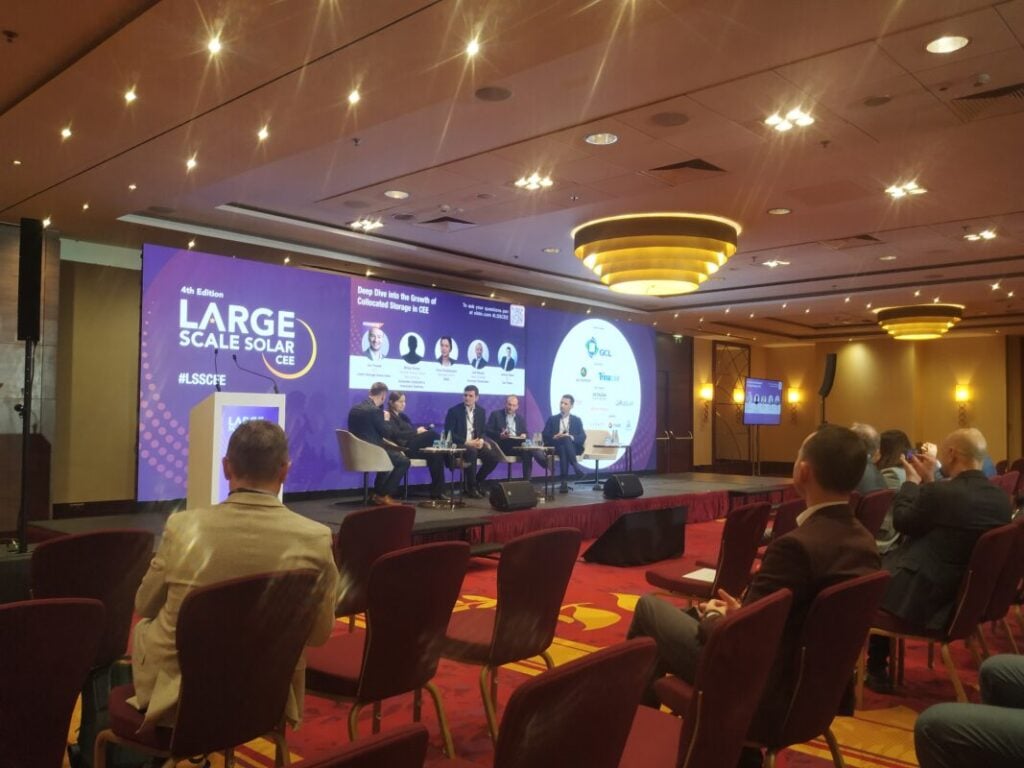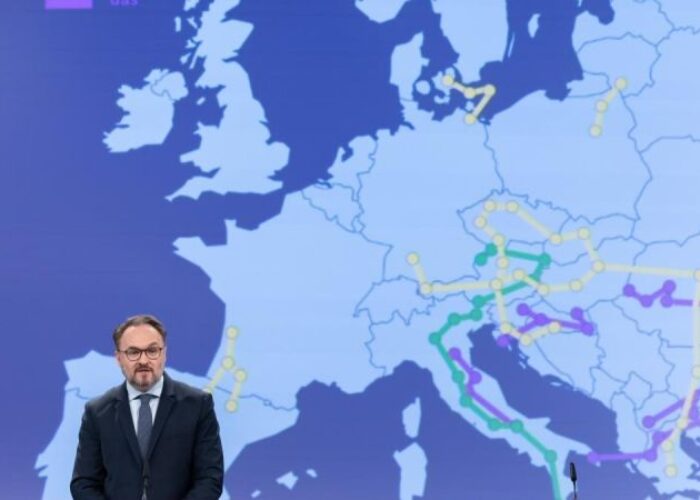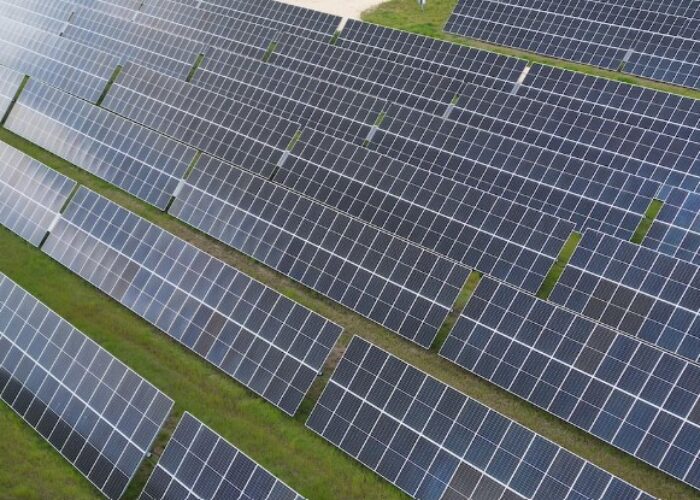
Maintaining a varied approach for solar and storage projects in Eastern Europe, both in terms of the storage technologies being used and the financial instruments used to support projects, could add a valuable aspect of flexibility to the Eastern European solar and storage markets.
This was a key takeaway from a panel discussion on co-located solar and storage projects at Solar Media’s Large Scale Solar Central Eastern Europe event, held in Warsaw this morning.
Try Premium for just $1
- Full premium access for the first month at only $1
- Converts to an annual rate after 30 days unless cancelled
- Cancel anytime during the trial period
Premium Benefits
- Expert industry analysis and interviews
- Digital access to PV Tech Power journal
- Exclusive event discounts
Or get the full Premium subscription right away
Or continue reading this article for free
“There may be a trend of retrofitting existing PV installations with batteries,” said Miłosz Gliński, executive director of global debt financing at Santander Corporate & Investment Banking. “It’s not going to happen yet … but it’s going to happen as it simply makes sense. We think the market in Poland will start with standalone, then greenfield co-located, then retrofits.”
“Develop to have a co-located angle,” agreed Josh Murphy, head of energy storage at Econergy Renewable Energy, who said that this flexible approach could be applied to storage technologies too. “Develop to have an AC connection, develop to have a DC connection … you want to prepare for every eventuality.”
Murphy also suggested that for developers, being technology agnostic with their storage projects could help make projects more financially attractive for investors, as the range of technologies available in the solar-plus-storage sector, and the variety of markets across Eastern Europe, means there is no clear idea of a single superior technology.
“DC-coupled co-located is the most efficient but now, with a commercial hat on, it’s a much better story for a bank or investor to have standalone storage that’s AC-coupled, or co-located that’s AC-coupled. There are no right answers for standalone versus co-located; it’s definitely scenario-based and market-based.”
Attracting offtakers and investors
The importance of making solar projects in Eastern Europe financially viable has been a common topic of discussion throughout this week’s event, and a number of panelists this morning suggested that the addition of storage to a solar facility can also make power generated at such a project a more attractive proposition for offtakers.
“Initially it was just mixing the wind and solar generation to create a baseload, not in a sense of hourly baseload but at the level of monthly generation,” said Damian Bąbka, chief investment officer at Qair Polska. “It was quite well perceived by the offtakers … but now I believe that isn’t enough for the offtakers. They prefer to have a more natural baseload and believe that adding storage to this mix will be crucial for every IPP or green utility that thinks about making good business in the Polish market.
Bąbka added that he doesn’t necessarily think that all storage projects should be co-located with renewable power projects, but said that “at the first step, they might be contractualised”, uniting their electricity generation with other storage facilities.
“This creates additional risk of curtailments, but I would argue those projects – PV and wind – that have contracts with storage projects should be privileged to not be disconnected from the grid.”
However, the combination of co-located solar and storage can make a project more attractive for offtakers, but may not necessarily make such a project a more attractive investment destination. Anna Chmielewska, associate director and senior banker at the European Bank for Reconstruction and Development (EBRD) said that Hungary had introduced an obligation for storage projects to be co-located with renewable power generation, but that this had not worked from an investment perspective.
“The response from the market was that it was premature or not practical, so there was a step back,” said Chmielewska. “From a system perspective, it’s a very good setup if the distributed generation units balance themselves out at the local level, but from a practical perspective, with the massive needs of investments, a mix of these business models will be needed.”
“The business model for storage is a business modal that’s evolving and will continue evolving over time,” added Chmielewska. “In the short-term, auxiliary services will be an important part of the revenue stream, but this market is likely to get saturated relatively quickly, so you need to be prepared for the next phase for your asset, where you’re prepared for more limited arbitrage.”
PV Tech publisher Solar Media is organising the fourth edition of Large Scale Solar Central and Eastern Europe in Warsaw, Poland 26-27 November 2024. The event focuses on Eastern Europe with a packed programme of panels from industry leaders responsible for the build out of solar and storage projects in Poland, Bulgaria, Romania, Hungary and the Baltics. For more information visit the event website.






